The construction industry workforce is aging.
However, this is not a new discovery—it’s an issue that has plagued the industry for years now.
And while construction companies are trying to attract new talent, that might not be enough. In order to meet the demand, you need to find ways to retain your older skilled workers.
This article is going to explore the current state of the industry with regard to age, as well as suggest what you can do to keep your aging workforce and ensure their health and safety on the construction site.
In this article...
What Statistics Show
It’s no secret that the construction industry has been struggling with a labor shortage in recent years.
One of the reasons for that is the fact that the construction industry lacks new, younger workers, while the existing workforce is aging.
According to the US Bureau of Labor Statistics, in 2020, the majority of construction industry workers were between the ages of 25 and 54—67.9% percent of them.
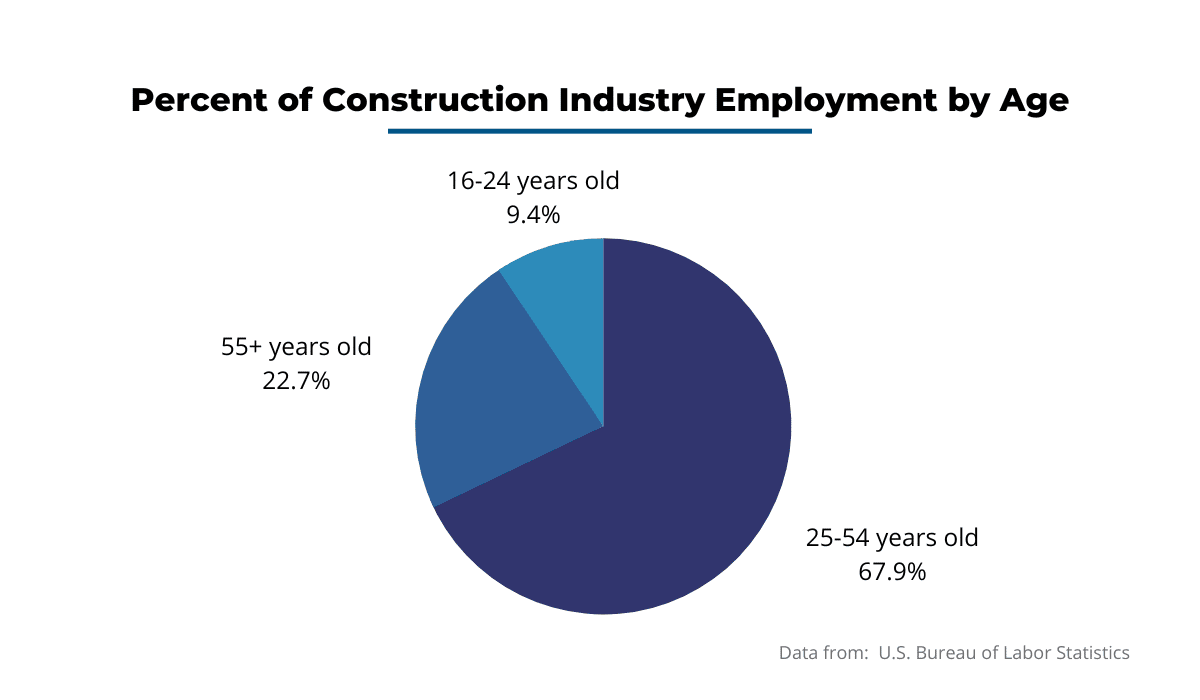
The median age of people employed in the construction industry is 42.3.
When looking at these numbers, however, we need to take into account the fact that they don’t only refer to skilled trade workers.
They also include positions such as administrative support, managers, and supervisors.
Atlanta Agent Magazine reports that “first-line supervisors of construction trades, extraction workers, and construction managers had the oldest median age, at 46”, whereas those working as helpers and in the construction trades had the lowest median age, at 30.
In the image below, you can see the average age of the construction workforce across the US.
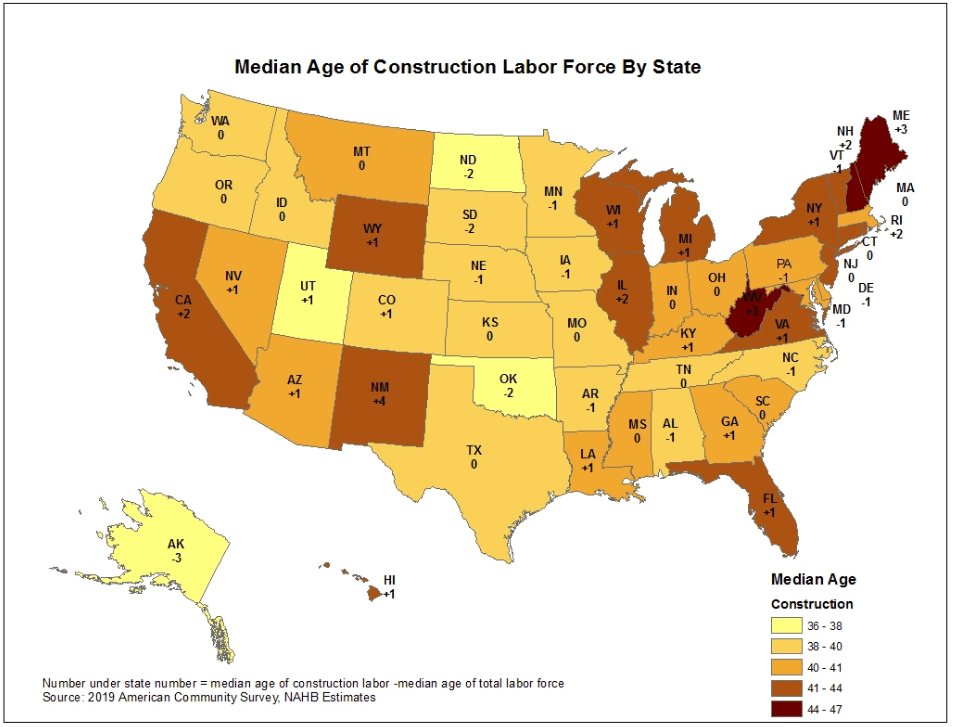
The fact that so many states have a fairly high construction worker median age isn’t surprising, though.
The 2018 Current Population Survey revealed that “the amount of construction workers ages 55 and up increased from just under 17 percent in 2011 to almost 22 percent in 2018”, reports SGC Horizon.
Since so many of the construction workers belonging to the baby boomer generation choose to keep working, the industry as a whole needs to consider how the current demographic trends are set to affect it in the future.
What This Means for the Construction Industry
The fact of the matter is, the construction industry is having a hard time bringing in new skilled workers.
And while it is necessary for construction businesses to invest in attracting new and younger talent, it is undeniable that older workers are an invaluable asset.
For starters, older workers have years of experience. As a generation, baby boomers also tend to have a company-first mindset, says Dan Ryan, a Nashville, TN area search consultant.
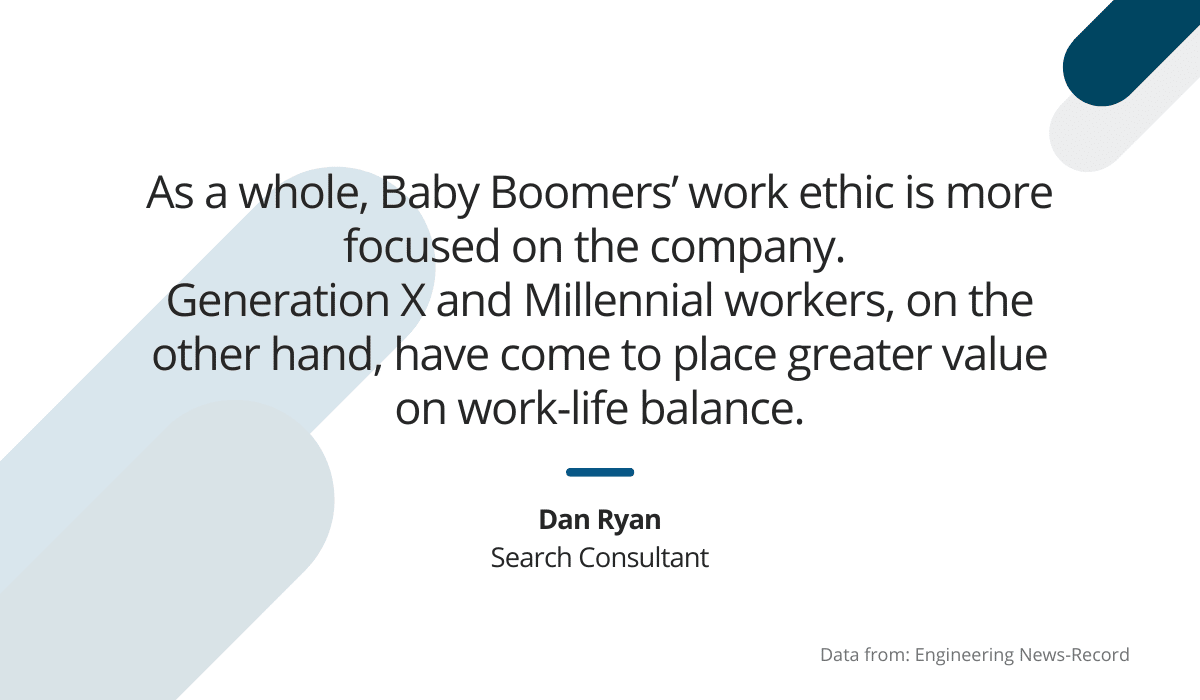
So, what does this mean for the construction industry? Simply put, it means that construction companies can’t afford to lose their older employees.
They need to show that they value them and find ways to retain them for as long as possible.
How to Manage an Aging Workforce
The thought of having your best and most experienced skilled workers retire (early) may be daunting.
Older workers play an important role in your company—they don’t only do their part of the work on the construction site, but also mentor their new, less experienced team members.
In order to successfully retain your older construction workers, you need to find ways to keep them interested in their job, but also help them maintain their health and safety on the construction site.
Transition Employees to Other Roles
Over the years they’ve been in the industry, your older skilled workers have seen and done so much.
They’ve worked on a variety of different projects, met numerous clients, worked in all kinds of conditions, and found ways to overcome issues along the way.
This kind of first-hand experience isn’t helpful only on the construction site. In fact, it can be extremely valuable in other roles within your company.
Take some time to evaluate the skills your older workers have and see where they would fit in best.
For example, those with great communication skills and the desire to transfer knowledge would likely do well as mentors.
Chris Trahan Cain, CPWR’s executive director, suggests some more roles they could transition into:
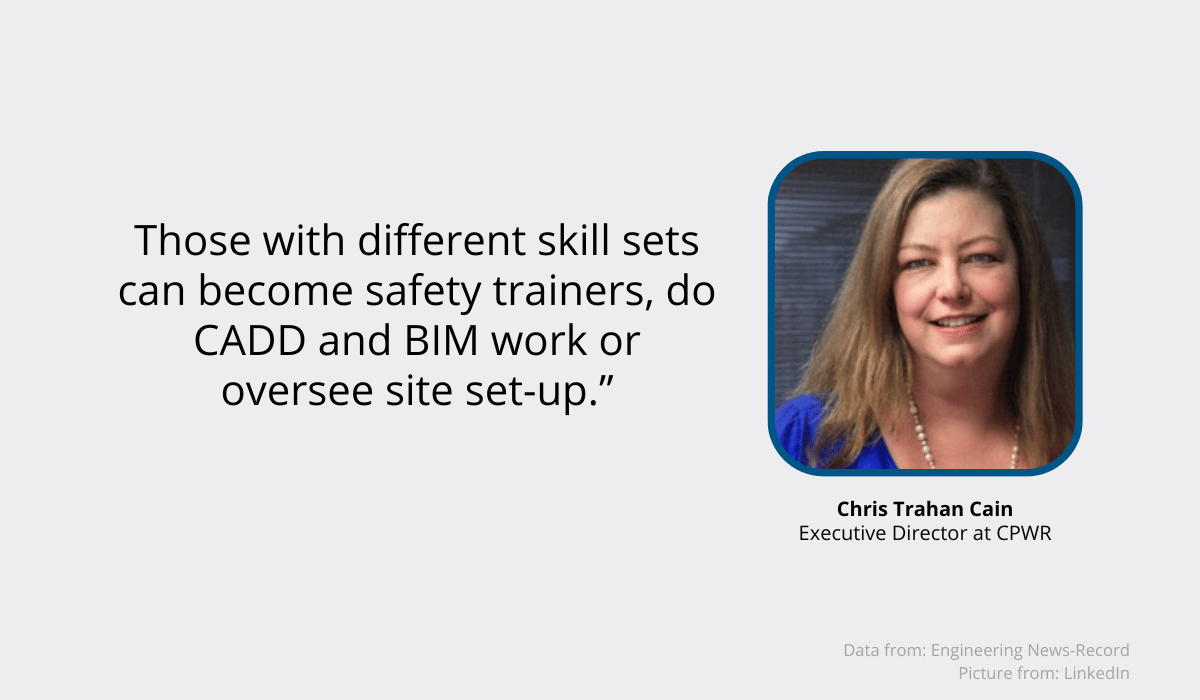
Assigning new and important roles to your older workers is a good way to show them that you recognize and appreciate the work they’ve put into honing their skills over the years.
This kind of change will probably feel natural, and they still get to do the kind of work they’re passionate about.
Promote Employee Fitness
While transitioning your aging workers to physically less strenuous roles is a great way to make use of their expertise, the truth is, there aren’t enough such roles for every one of them to fill.
So, what can you do about those that will be required to keep working as skilled laborers?
You need to make an effort to help keep your older workers in good health and safe from workplace injuries.
Encourage your crew to do stretches every day before they start working.
Only 10 minutes of stretching a day can help make sure the muscles stay flexible and reduce the risk of getting injured on the construction site.
Take a look at some examples of stretches and core exercises in the image below.
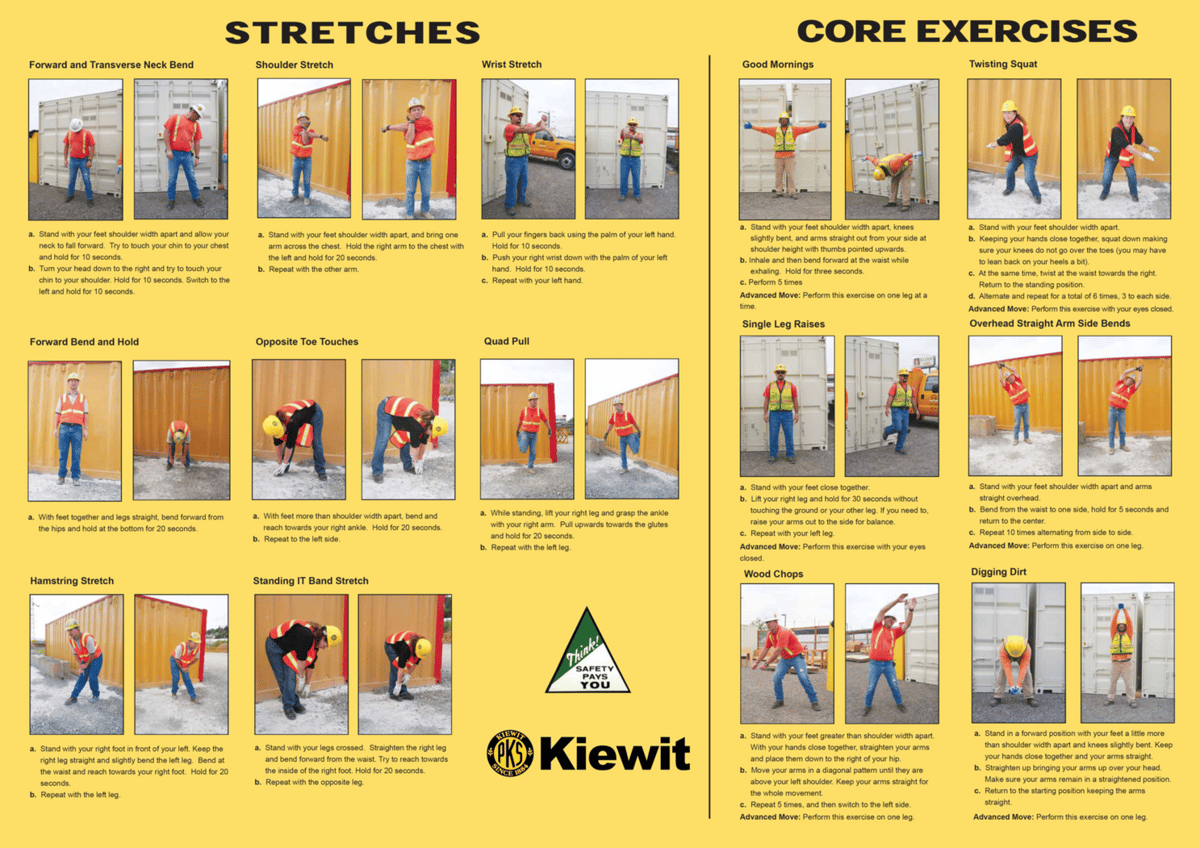
Visual aids such as photos and videos that show how to do the exercises are useful in making sure your workers perform them correctly.
To help them develop this habit, you can have your entire crew do them together, like in this YouTube video.
Reduce Physical Demands
Apart from promoting regular exercise, you can reduce the risk of injury by minimizing physical demands for your older workers.
Don’t turn a blind eye to the fact that certain construction site tasks become more difficult to complete as people age.
Hard manual labor throughout one’s lifetime leaves serious consequences on the human body in the later years, and older construction workers tend to become susceptible to musculoskeletal disorders.
According to the US Bureau of Labor Statistics, such injuries are a fairly frequent occurrence in the construction industry.
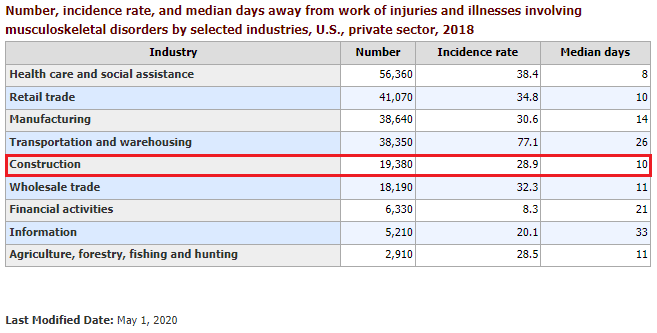
To make work easier and safer for your older employees, acknowledge the fact that adjustments need to be made to their workload and the types of tasks they perform.
You can achieve this by improving ergonomics on the construction site.
“Research makes it clear that a program of ergonomic improvements can reduce physical demands and increase operational productivity,” explains Scott Stone, Director of Marketing for Cisco-Eagle.
Such improvements include investing in lightweight concrete blocks, reduced vibration power tools, and tools that will allow the workers to stand upright as they work.
For more ergonomics solutions you can implement, we suggest you check out this booklet that NIOSH has released.
Invest in New Technology
It is undeniable that modern technology is becoming omnipresent in many areas, and the construction industry is no exception.
Your older employees might find it challenging to keep up with technological advancements so they might find those changes daunting.
However, if you implement technology the right way, they don’t have to be.
There is a variety of new and invaluable construction technologies if you’re looking to keep your older workers safe and relieve them of certain physically demanding tasks.
For example, drones are one of the technologies that are gaining popularity in the construction industry.
They are small, lightweight, and versatile, so they’ll be able to complete various tasks on the construction site.
Noel C. Borck, LHSFNA Management Co-Chairman, explains how you can use drones to keep your workers—especially the older ones—out of dangerous situations:
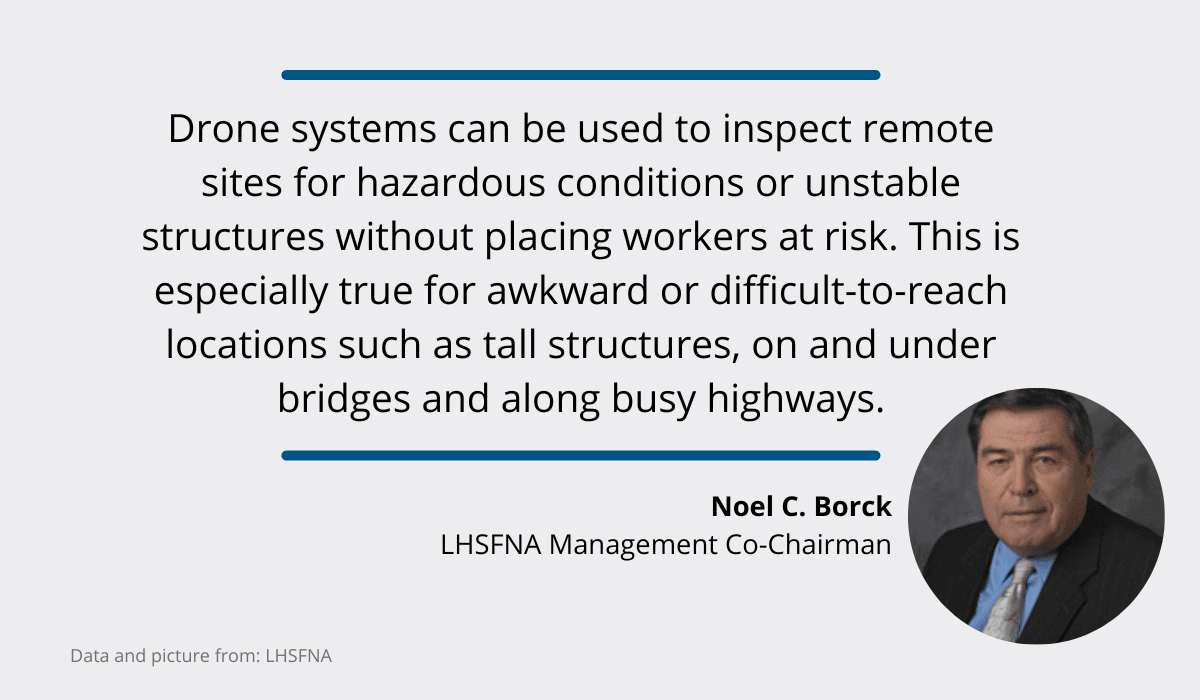
Of course, implementing new technologies on the construction site is going to require some getting used to.
Encourage your more tech-savvy employees to pair up with the older workers and show them how to operate a drone.
That way, they will adopt a new skill while staying safe on the construction site.
Provide a Healthy Work-Life Balance
Working in construction can be mentally and physically taxing.
Combined with the “company-first” mentality that many older workers have, this can be detrimental to their well-being.
While having a hard-working and proactive attitude is commendable, your workers, especially the older ones, need a good work-life balance in order to stay safe and healthy.
Nicholas Blaser, construction project manager at Jacobs, explains:
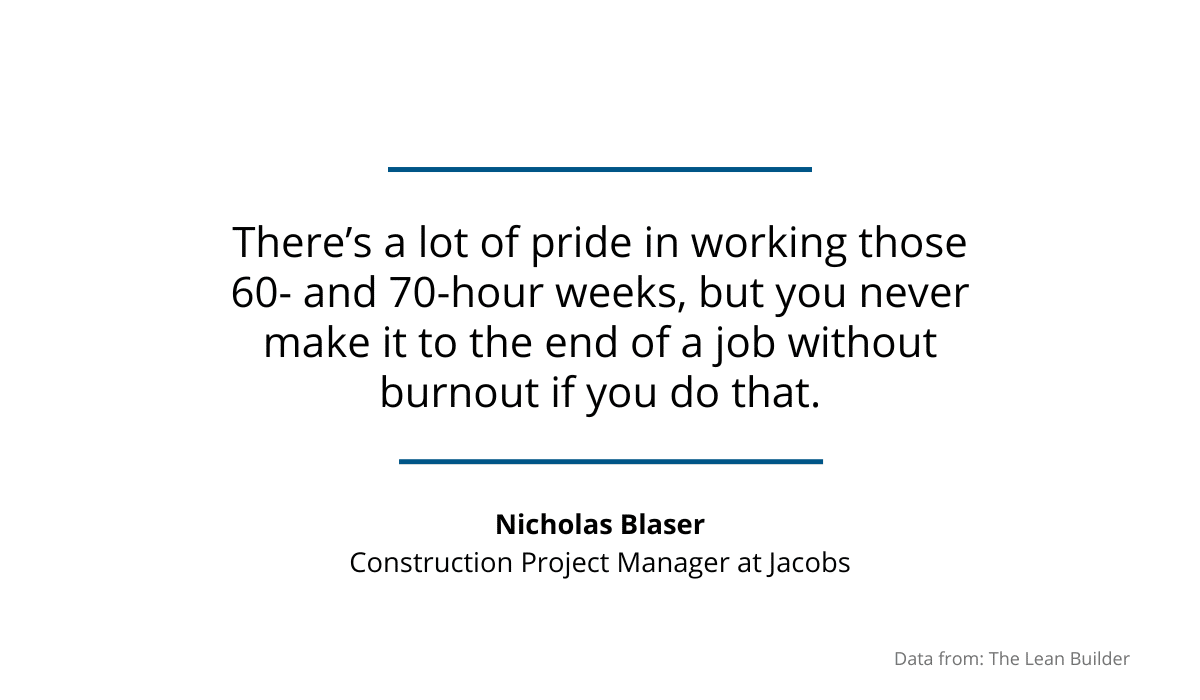
As a leader, it is important for you to take the time to continuously highlight the importance of work-life balance.
You can achieve this by offering your older workers a flexible schedule or encouraging them to use their vacation days.
Using construction management software, you can distribute tasks in such a way that the younger workers take over the more physically demanding ones.
This will allow you to schedule the older workers only for those times when their expertise is required.
Your older workers might find it difficult to get used to working less and even feel guilty for taking vacations.
However, try to regularly remind them of the fact that proper rest is essential for their well-being and the ability to perform well in the workplace.
Conclusion
Even though the workforce in the construction industry is aging, you can still slow down the retirement process for your best older employees.
Leverage their expertise by transitioning them into less physically demanding roles and make sure to invest in new technology that is going to keep them safe and relieve them of physically straining tasks.
Lastly, don’t forget to provide them with a flexible schedule and plenty of rest days so that they can stay healthy and perform well on the site.





